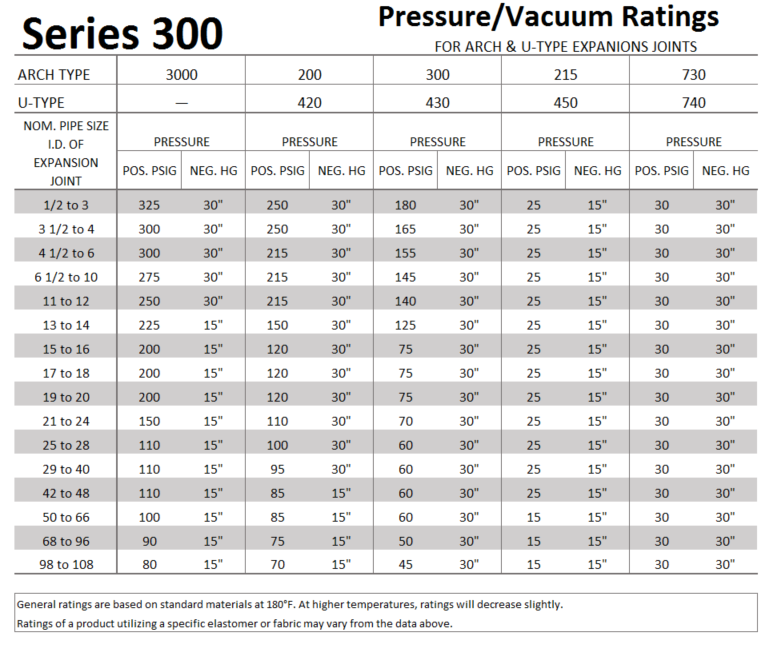Applications
The Original Hand-Crafted Elastomer Piping Expansion Joint
 The Series 300 elastomer piping expansion joint is hand-crafted and designed to absorb motion and displacement between pipe flanges. These handcrafted, one-piece elastomeric expansion joints feature an exclusive H-R double protected construction. Used and proven in tough services since 1962, Holz non-metallic expansion joints incorporate the finest materials in combination with painstaking fabrication techniques.
The Series 300 elastomer piping expansion joint is hand-crafted and designed to absorb motion and displacement between pipe flanges. These handcrafted, one-piece elastomeric expansion joints feature an exclusive H-R double protected construction. Used and proven in tough services since 1962, Holz non-metallic expansion joints incorporate the finest materials in combination with painstaking fabrication techniques.
Series 300 Elastomer Piping Expansion Joint
- Absorbs motion and displacement between pipe flanges perfect for high shock and vibration situations
- Recommended for temperatures up to 300°F; Viton® tube/ cover will reach 400°F
- Increased efficiency of piping systems by managing high range of temperatures and pressures
- Prevents pipe buckling or fracture
- Features steel body rings held in place with exclusive ring enveloper system
- Manages a high range of temperatures and pressures
- Available for all general applications including severe and harsh environments
- Engineered and built to specific customer requirements
- Can be designed for full vacuum service
- Available sizes: 1/2 to 108
Ideal for Application Conditions:
- Waste water
- Slurry
- Sludge
Construction of Piping Expansion Joint
 Tube: The Series 300 piping expansion joint is built with a protective, leak proof lining made of synthetic or natural rubber. The tubes primary function is to eliminate the possibility of materials being handled penetrating the carcass. Carcass: The carcass or body of the expansion joint consists of fabric, and when necessary metal. Cover: A piping expansion joint cover is the exterior surface of the joint. Fabric Reinforcement: The carcass fabric reinforcement is the flexibility and supporting member between the tube and cover. Metal Reinforcement: Wire or solid steel rings imbedded in the carcass are frequently used for strengthening.
Tube: The Series 300 piping expansion joint is built with a protective, leak proof lining made of synthetic or natural rubber. The tubes primary function is to eliminate the possibility of materials being handled penetrating the carcass. Carcass: The carcass or body of the expansion joint consists of fabric, and when necessary metal. Cover: A piping expansion joint cover is the exterior surface of the joint. Fabric Reinforcement: The carcass fabric reinforcement is the flexibility and supporting member between the tube and cover. Metal Reinforcement: Wire or solid steel rings imbedded in the carcass are frequently used for strengthening.
Series 300 Expansion Joint Specifications
Click image to enlarge or download printable Series 300 Piping Expansion Joint Specification sheet below.



